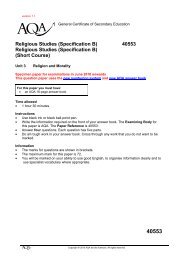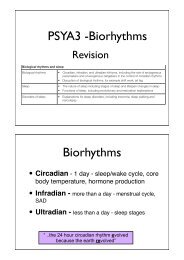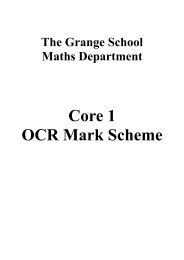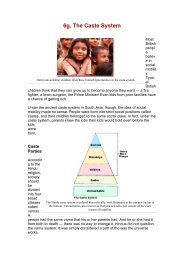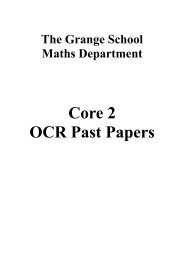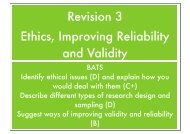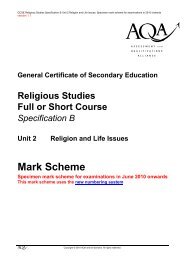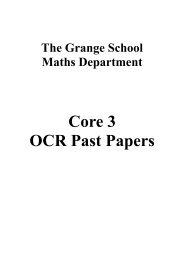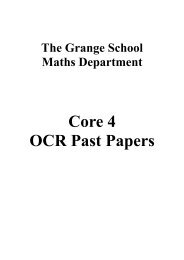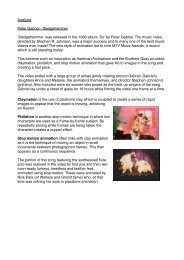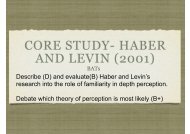Prob & Stats 2 OCR Past Papers - The Grange School Blogs
Prob & Stats 2 OCR Past Papers - The Grange School Blogs
Prob & Stats 2 OCR Past Papers - The Grange School Blogs
You also want an ePaper? Increase the reach of your titles
YUMPU automatically turns print PDFs into web optimized ePapers that Google loves.
3<br />
Jan 2007<br />
5 On a particular night, the number of shooting stars seen per minute can be modelled by the distribution<br />
Po(0.2).<br />
(i) Find the probability that, in a given 6-minute period, fewer than 2 shooting stars are seen. [3]<br />
(ii) Find the probability that, in 20 periods of 6 minutes each, the number of periods in which fewer<br />
than 2 shooting stars are seen is exactly 13. [3]<br />
(iii) Use a suitable approximation to find the probability that, in a given 2-hour period, fewer than 30<br />
shooting stars are seen. [6]<br />
6 <strong>The</strong> continuous random variable X has the following probability density function:<br />
where a and b are constants.<br />
a + bx 0 ≤ x ≤ 2,<br />
f(x) ={<br />
0 otherwise,<br />
(i) Show that 2a + 2b = 1. [3]<br />
(ii) It is given that E(X)= 11 . Use this information to find a second equation connecting a and b,and<br />
9<br />
hence find the values of a and b. [6]<br />
(iii) Determine whether the median of X is greater than, less than, or equal to E(X). [4]<br />
7 A television company believes that the proportion of households that can receive Channel C is 0.35.<br />
(i) In a random sample of 14 households it is found that 2 can receive Channel C. Test, at the 2.5%<br />
significance level, whether there is evidence that the proportion of households that can receive<br />
Channel C is less than 0.35. [7]<br />
(ii) On another occasion the test is carried out again, with the same hypotheses and significance level<br />
as in part (i), but using a new sample, of size n. It is found that no members of the sample can<br />
receive Channel C. Find the largest value of n for which the null hypothesis is not rejected. Show<br />
all relevant working. [4]<br />
[Question 8 is printed overleaf.]<br />
© <strong>OCR</strong> 2007 4733/01 Jan07 [Turn over



